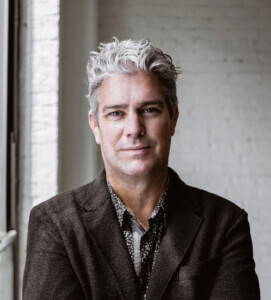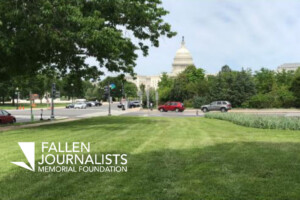The Fallen Journalists Memorial Foundation (FJMF) recently announced that John Ronan Architects, led by principal John Ronan FAIA (MArch ’91), will design the first national memorial dedicated to slain journalists and press freedom. To be located on the National Mall in Washington, DC, the Fallen Journalists Memorial “honors the lives lost in the pursuit of truth and celebrates the First Amendment rights in American democracy,” according to the FJMF’s press release. The memorial’s design incorporates glass elements through which visitors navigate to reach a place of remembrance.
Established in 1999 and based in Chicago, John Ronan Architects embraces an interdisciplinary approach to design that it has deployed for a range of project types, from private homes to educational complexes to high-rise office towers. The firm can now add a memorial to this list.

FJMF’s choice of Ronan as designer culminates a ten-month selection process during which a ten-member selection committee, led by distinguished architecture critic Paul Goldberger, reviewed more than fifty proposals from the United States and abroad. The committee narrowed the field to Ronan and four other finalists, all of whom have ties to the GSD: MOS (Michael Meredith MArch ’00 and Hilary Sample); Hood Design Studio (Walter Hood, Loeb Sr Scholar ’21), NADAA (Nader Tehrani MAUD ’91 and Arthur Chang), and Höweler + Yoon (Eric Höweler, Associate Professor in Architecture at the GSD, and J. Meejin Yoon MAUD ’97). Ultimately, Ronan won the commission on the strength of his team’s “unique and compelling design concept,” notes FJMF chairperson David Dreier in the press release, “which calls for the use of transparent materials to convey themes of clarity and light,” thereby reinforcing “the importance of the work of journalists, photojournalists, and a free press.”
“It’s a very abstract undertaking,” says Ronan. “How do you put the First Amendment into physical form, or remember fallen journalists?” He began by exploring materials related to issues of “transparency and distortion,” which led to layers of glass. Ronan characterizes the visitor’s movement through the glass structures as “a journey of discovery,” echoing the way discrete facts, pieced together by an investigative journalist, coalesce into a story. Ronan envisions the memorial’s design as an architectural manifestation of this accumulative experience. The strategy of choreographed spatial progression recalls an earlier noteworthy project in Ronan’s portfolio—the building for the Poetry Foundation (2010) in Chicago, likened on the firm’s website to a poem “revealed line by line.”

The memorial will occupy a triangular island parcel on the National Mall, formed by the intersection of Independence Avenue, Maryland Avenue, and 3rd Street, in direct view of the US Capitol Building. This site is quite fitting, Ronan notes, as the memorial is “set amidst governmental emblems of power and authority yet stands apart, independent of them as well—like a journalist observes power and its mechanisms but is separate from it.”
Ronan feels honored to be the foundation’s chosen designer for the Fallen Journalists Memorial. “The role of the journalist has never been more important and the ideals of a free press never more consequential,” says Ronan. “The timing is very appropriate for a memorial like this, appreciating journalists, the risks they take to pursue the truth, and how difficult that has become in recent years.”
Congress authorized the FJMF in December 2020, and Ronan’s final design will become public after receiving federal approval in the next nine to twelve months. The memorial’s dedication is expected in late 2028.